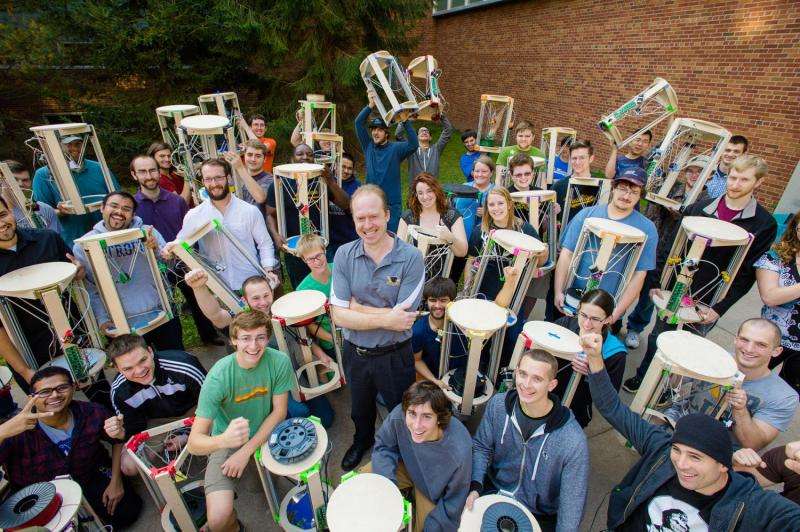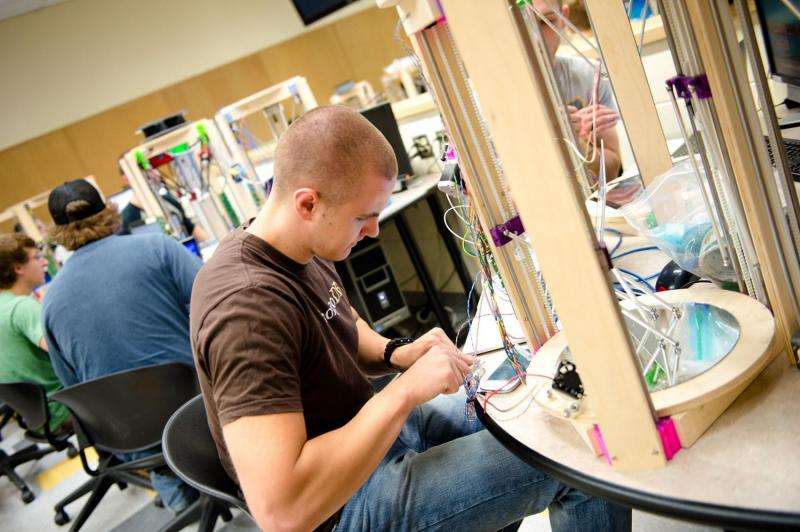Making a difference with open source science equipment

Science can be expensive. But making customized scientific equipment doesn't have to be. Researchers at Michigan Technological University have compiled economic data on the effectiveness of open source hardware in the laboratory—and the process looks promising.
The new study, published in Science and Public Policy, was led by Joshua Pearce, an associate professor of materials science and engineering as well as electrical and computer engineering at Michigan Tech. Pearce says that distributed digital manufacturing of open source hardware will make science both cheaper and more accessible.
Open Source
Defining open source as "free" is too simple. While it does mean free access to papers, downloads and data, open source focuses primarily on sharing knowledge in order to refine and apply that knowledge. Free, or even inexpensive, is currently hard to come by in research.
"In science, we all have this problem where we pay so much for scientific equipment that it overwhelms our budgets," Pearce says, explaining that a lot of equipment is simple—mechanically speaking—and can even be manufactured with a do-it-yourself 3-D printer like the RepRap.
Pearce proposes that instead of spending millions of dollars every year replacing quickly obsolescent equipment, that money could be redirected to developing open source tools that are "upgradeable and transformable—they will be continuously updated" using digital manufacturing techniques such as 3-D printing.
The benefits could be huge: research would cost less, the equipment would improve each year, grant competition would be less inflamed and educational tools would provide better inspiration and instruction. Outside the lab, open source tools could help spur innovation and diversity in the science manufacturing market. While these big impacts would take time to grow, Pearce and his Michigan Tech Open Sustainability Technology lab did quantify the impact of open source syringe pumps.
Making an Accessible Syringe Pump
Syringe pumps are ubiquitous and an iconic scientific tool. Their prices range from several hundred bucks to a couple of thousand dollars, and depending on how they're used, the designs vary.

Pearce and his group created 3-D printable models—completely customizable—for $97 for a single pump and $154 for a double pump, using open source CAD software and off-the-shelf motor parts. They posted the designs and codes on Youmagine and Thingiverse; within ten months, they had 1,035 downloads. And each download counterbalances the cost of purchasing a syringe pump.
"We know at the very least that our design is more cost-effective than low end syringe pumps," Pearce says. "You look at our syringe pump, and it's way better than the low end ones—it matches performance of high end syringe pumps that anyone can build themselves."
To calculate a return on investment, the team examined the download substitution value. Basically, they took the price of a syringe pump and the cost of manufacturing their own tool design—the difference between them represents a savings. Then they multiplied that savings by the number of people who downloaded the design and made the tool. Pearce and his team estimate the return on investment for this case study is between 460 percent and 12,000 percent.
Not Just Cheap
Inexpensive and convenient, however, does not mean low quality.
"It's one thing to have a cheap device, and another to have a tool you can trust to do scientific research," Pearce says.
A key point of Pearce's research is that calibrating open source devices and ensuring quality is invaluable. The problem is that there is currently no way to track that validation.
"That's where the initial funding comes in," Pearce says, adding that the National Science Foundation (NSF), National Institutes of Health (NIH) and other major funders could make a big difference in improving open source validation. "They can also build a centralized database to house that information—including the code—and make the hardware more accessible."
Until those databases exist, Pearce plans to keep improving open source tools, one syringe pump and download at a time.
Provided by Michigan Technological University




















